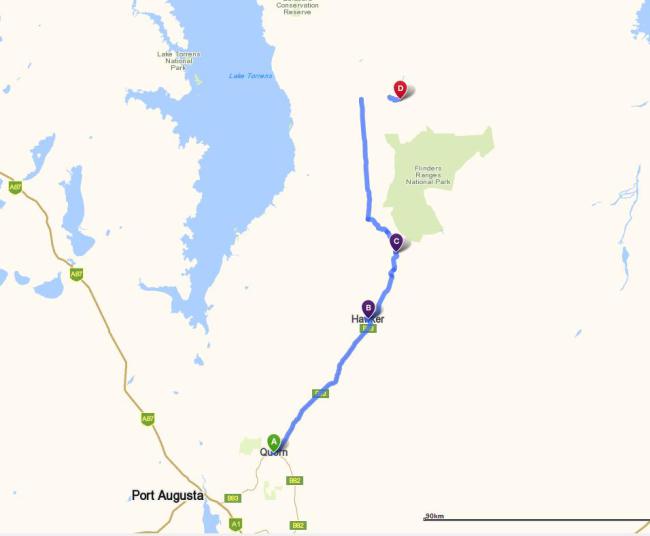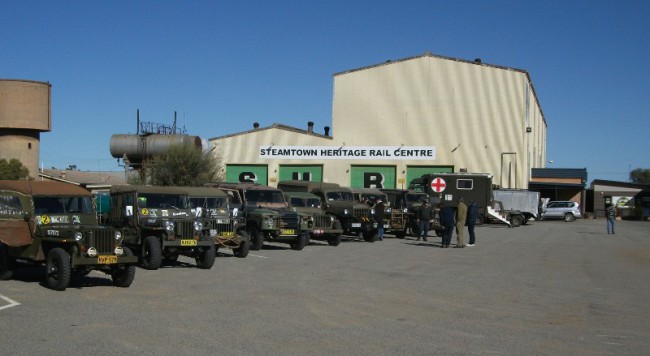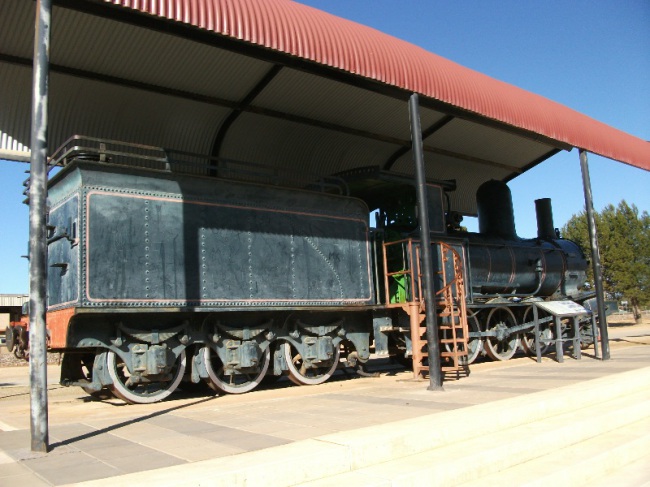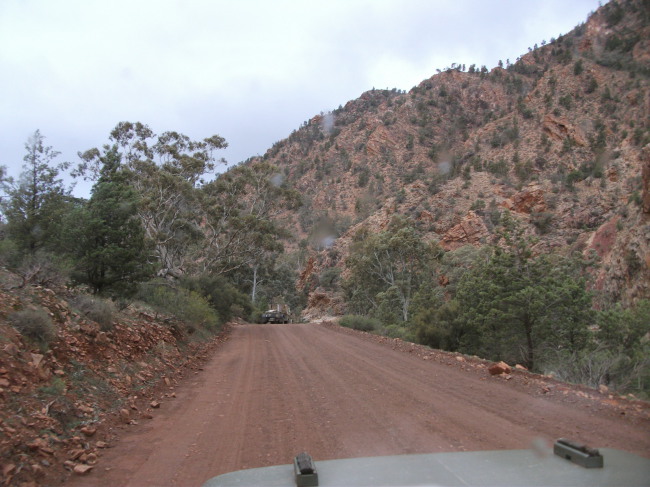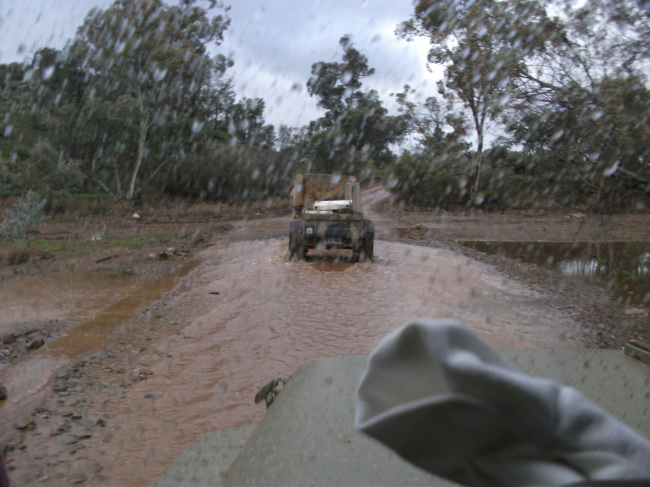This is Part II of Leigh’s trip across Australia in a 1944 Ford GPW. Read Part I here.
Leaving early we travelled to Peterborough in the southern Flinders Ranges. Peterborough developed from a small country town to a major regional centre with the coming of the railways in1881 and was the largest railway depot outside Adelaide, with huge workshops, a 23 bay roundhouse and a 3 gauge turntable, sadly increasing motorisation led to the demise of the railways and after the closure of the line in the early 1990’s all that remains is the Steamtown Heritage Rail Centre housed in the original workshops and depot. www.steamtown.com.au
Once again the weather was best described as “ordinary” as we travelled through the small townships of Orroroo and Wilmington to arrive at Quorn in the late afternoon where we camped in dismal conditions at the Town Oval and had our evening meal supplied by the Community Sporting Assoc.
That night was spent clinging to our mattress as un-seasonal gale force winds and driving rain hammered the campground, fortunately it cleared slightly by morning and we set off damp and weary for Alpana Station. (station in this instance is the equivalent of an American Ranch) Established in 1878, Alpana spans 60,000 acres however can only support around 3000 Merino sheep due to the arid nature of the country.
The route taken was via Kanyaka ruins and Brachina Gorge where once again it rained heavily and made conditions difficult, so much so that in the evening the road was officially closed to traffic.
Kanyaka Station was established as a cattle station in February 1852 by Hugh Proby. The Flinders Ranges is very dry country, so it is both tragic and ironic that on 30 August 1852, Proby drowned when he was swept from his horse crossing the swollen Willochra Creek while trying to herd a mob of cattle during a thunderstorm.Under subsequent owners, the station grew in size until it was one of the largest in the district with 70 families living and working there. Because of the difficulties of transport, the station had to be very self-sufficient and Kanyaka station grew to include a large homestead, cottages for workers, workshops, huts and sheds, mostly built from local stone due to limited supplies of workable local timber. Severe droughts resulted in massive losses of stock and eventually the station was abandoned. Due to its stone construction, many of the buildings survive today as ruins and are a popular tourist attraction.
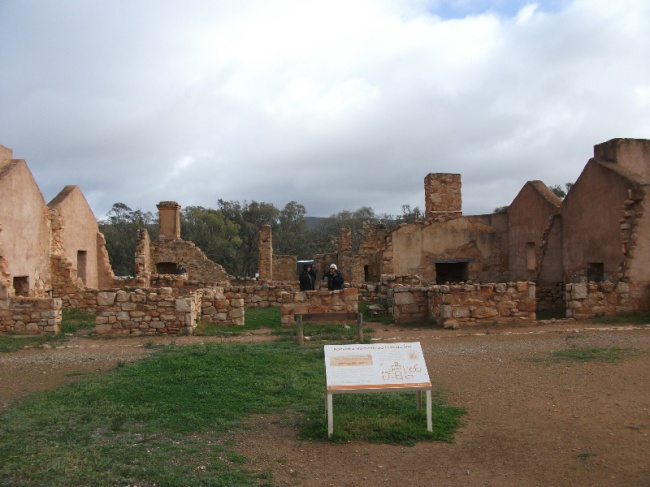
Kanyaka homestead
Once again camp was set up in the rain at Alpana Station, tomorrow on to the small settlement of Blinman.

